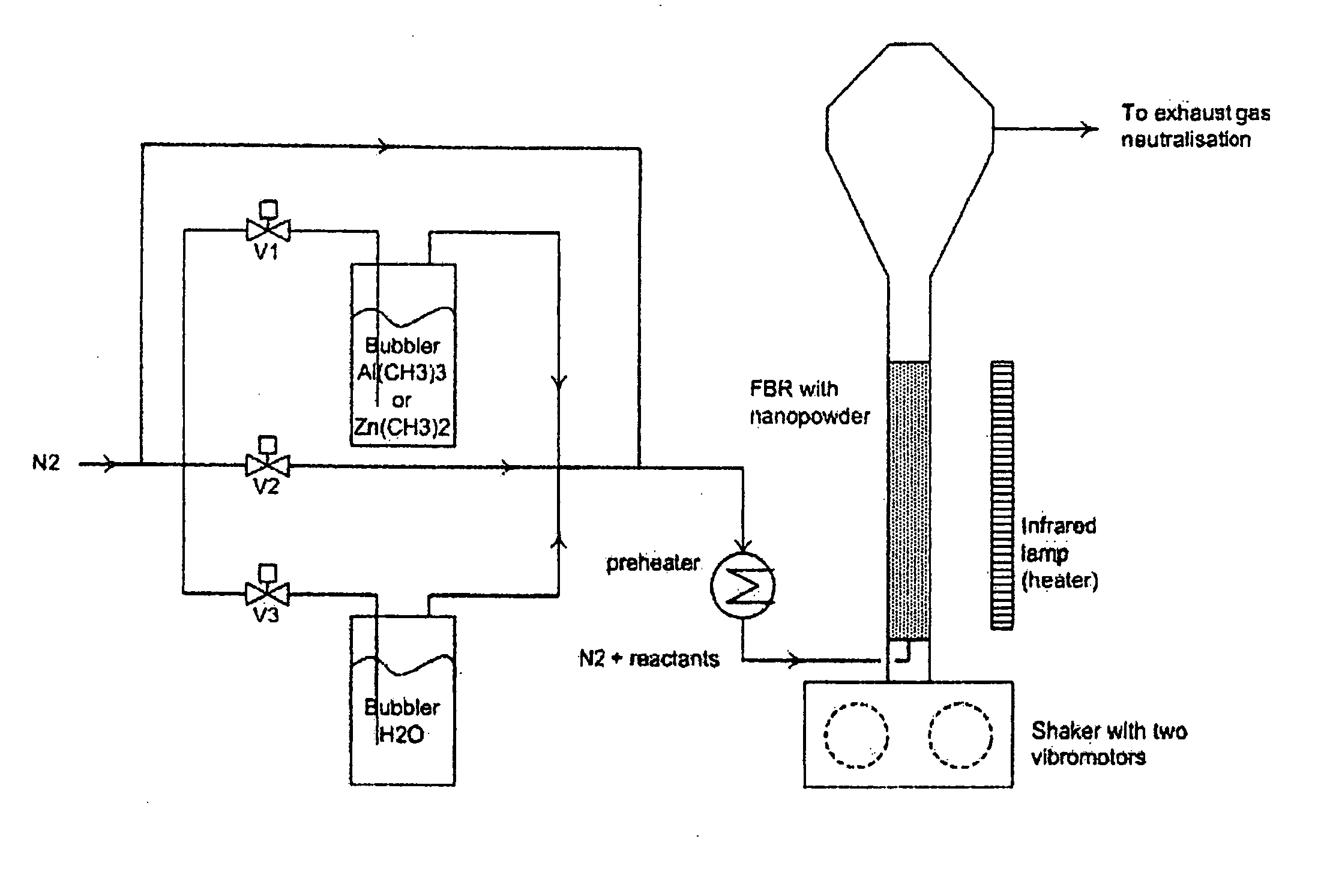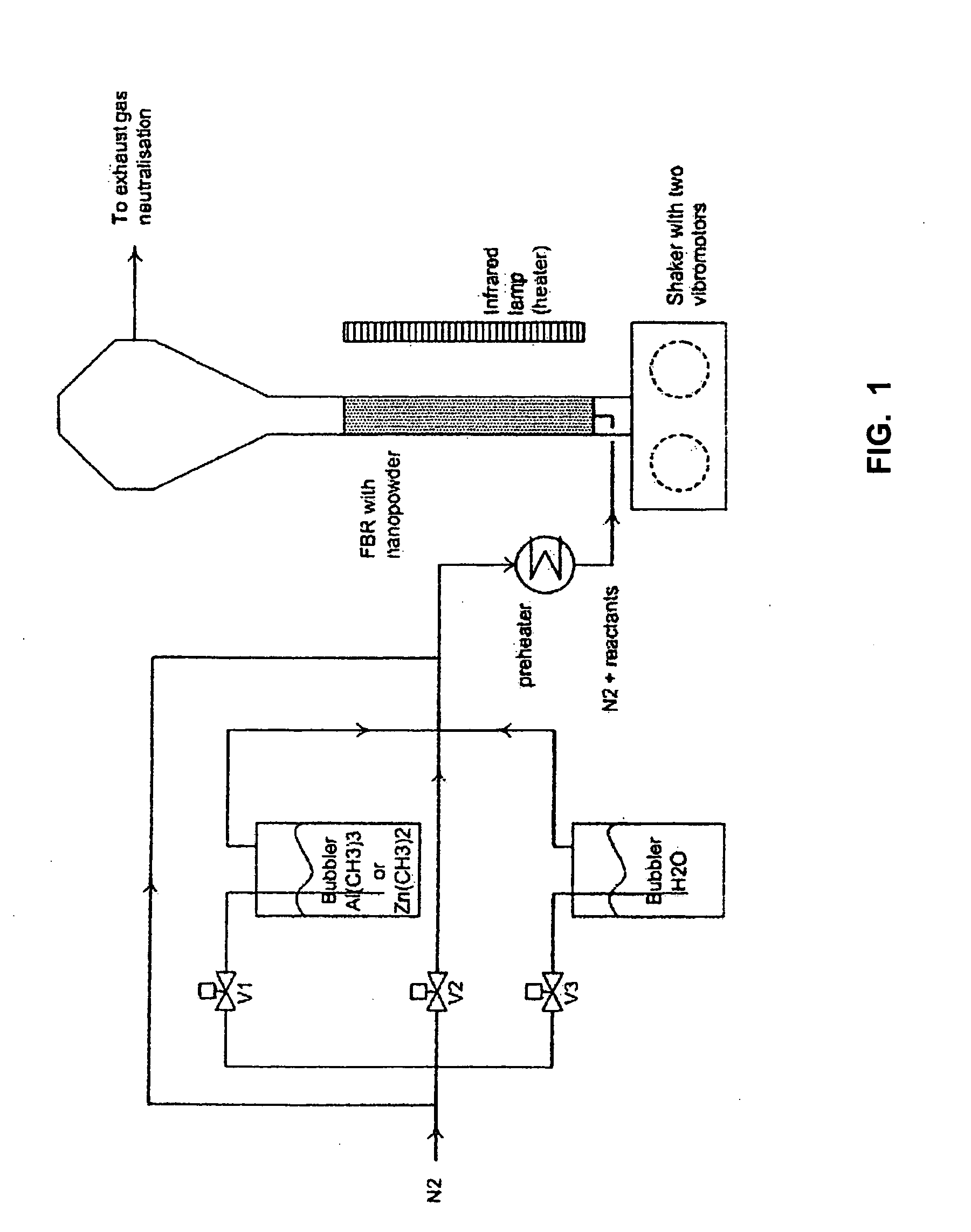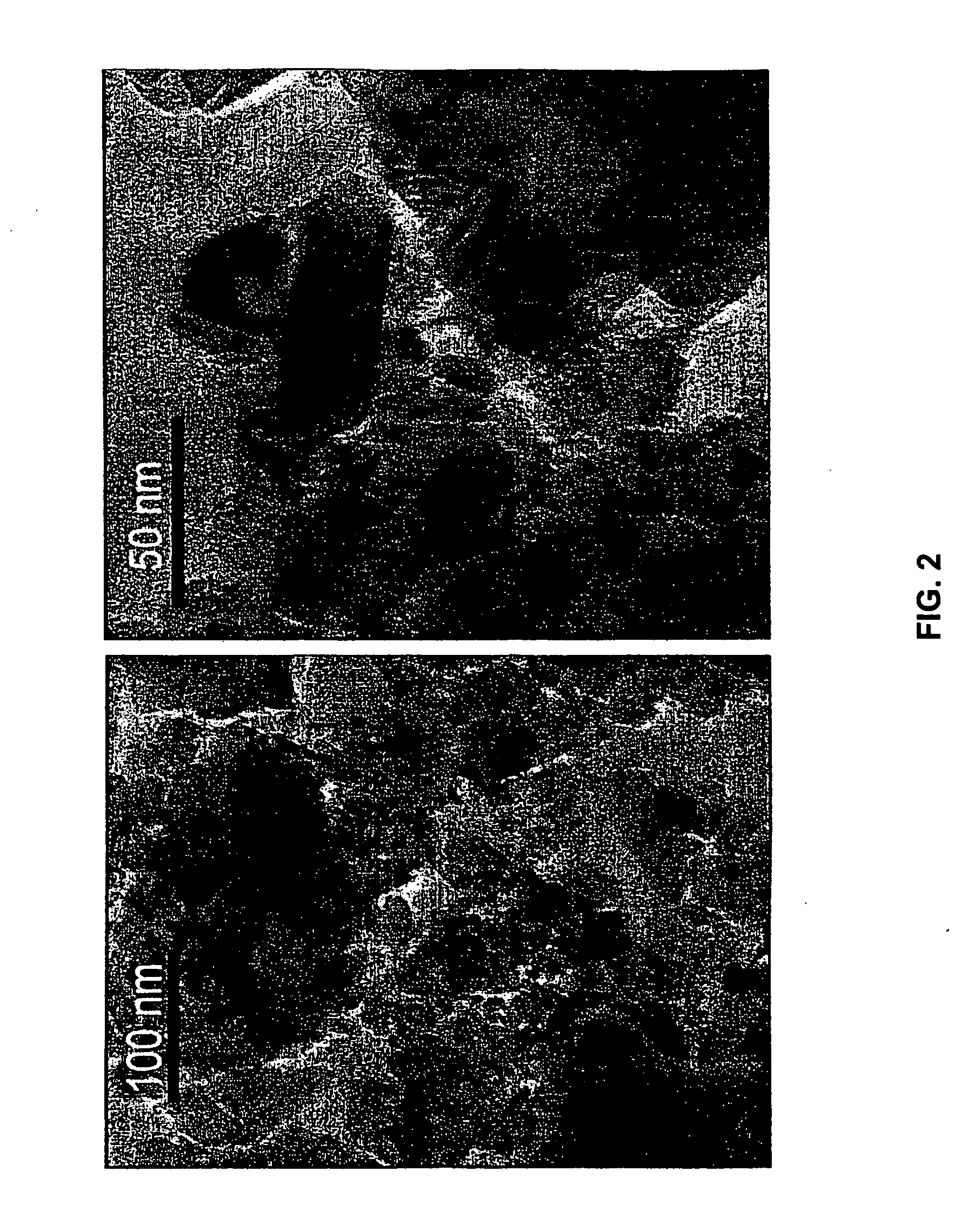Method for Covering Particles, Especially a Battery Electrode Material Particles, and Particles Obtained with Such Method and a Battery Comprising Such Particle
a technology of battery electrode material and particle, which is applied in the field of method for covering particles, can solve the problems of high density, long charging time, and small and lighter batteries, and achieve the effects of improving battery life, reducing battery life, and improving battery li
- Summary
- Abstract
- Description
- Claims
- Application Information
AI Technical Summary
Benefits of technology
Problems solved by technology
Method used
Image
Examples
Embodiment Construction
[0014]According to the invention, the method for covering said particles comprises the steps as mentioned in claim 1. By means of this method, a very uniform and as thin as possible layer is obtained on said nano-particles. According to a preferred embodiment, the method further comprises the step of (b) subsequently fluidizing said particles in said fluidized bed reactor using a second reactant gas comprising a second reactant for substantially completely covering said particles obtained in step (a) with a monolayer of said second reactant. Such a method is especially preferred if a layer should be provided on the nano-particles that is a product of two different reactants, that are provided subsequently to the nano-particles. Such is especially very suitable if the first reactant adsorbs on and / or optionally reacts with the nano-particles, and wherein the second reactant adsorbs on and / or reacts with the first layer that is provided on the nano-particles. A preferred embodiment co...
PUM
| Property | Measurement | Unit |
|---|---|---|
| diameter | aaaaa | aaaaa |
| pressure | aaaaa | aaaaa |
| pressure | aaaaa | aaaaa |
Abstract
Description
Claims
Application Information
 Login to View More
Login to View More - R&D
- Intellectual Property
- Life Sciences
- Materials
- Tech Scout
- Unparalleled Data Quality
- Higher Quality Content
- 60% Fewer Hallucinations
Browse by: Latest US Patents, China's latest patents, Technical Efficacy Thesaurus, Application Domain, Technology Topic, Popular Technical Reports.
© 2025 PatSnap. All rights reserved.Legal|Privacy policy|Modern Slavery Act Transparency Statement|Sitemap|About US| Contact US: help@patsnap.com



